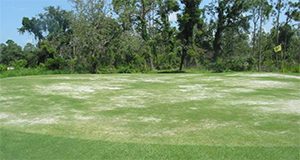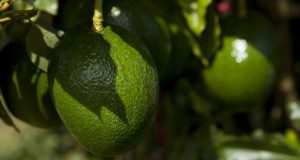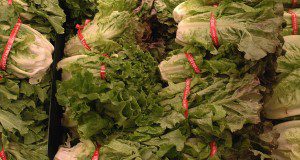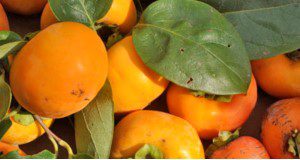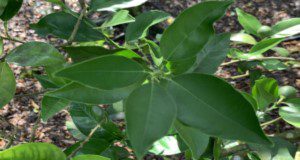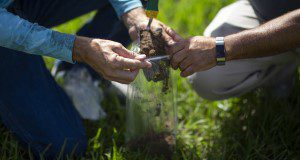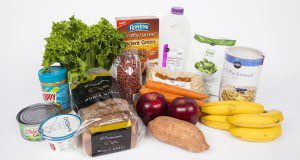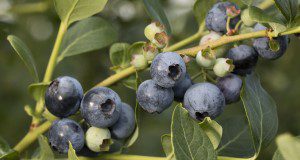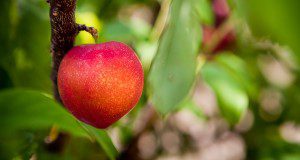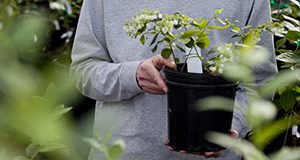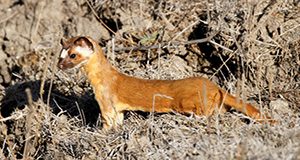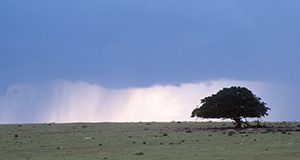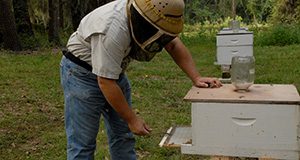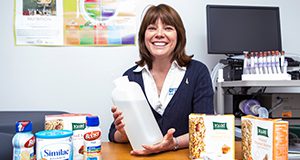Non-fumigant nematicides are formulated as liquids or granules that are moved through the soil by water. This 4-page fact sheet written by T. T. Watson and J. A. Desaeger and published by the UF/IFAS Entomology and Nematology Department is a major revision. It was first published in 1999 and most recently revised in Aoril 2019. The fact sheet lists and describes chemical and biological non-fumigant nematicides and provides some information about how these products work against nematode pests.
https://edis.ifas.ufl.edu/ng033
Macrocybe titans: The Mushroom Giant of the Western Hemisphere
The aptly named Macrocybe titans, meaning “giant head,” is the largest known gilled mushroom in the Western Hemisphere. This species was originally described from Florida but can be found across the southeastern United States as well as the Caribbean, Central America, and parts of South America. These mushrooms are often found in clusters with the caps growing as large as 3 ft wide and 1–1.5 ft tall! This species was first discovered in Gainesville, Florida, and is generally found near buildings or roads. This new three-page publication of the UF/IFAS Plant Pathology Department describes these giant mushrooms, their discovery, and where to find them. Written by Elena Karlsen-Ayala and Matthew E. Smith.
https://edis.ifas.ufl.edu/pp356
Meal Planning for Adults with Diabetes
Nutrition, physical activity, and medication are the three main components of a diabetes management plan. According to the Americans Diabetes Association, there is no one diabetes meal plan; rather, it is a healthful eating pattern specifically designed to meet your individual needs. This new 2-page publication of the UF/IFAS Food Science and Human Nutrition Department provides some basic tips for creating a personalized meal plan for adults with diabetes. Written by Nancy J. Gal and Wendy J. Dahl.
https://edis.ifas.ufl.edu/fs323
Recommendations for the Detection and Mitigation of Laurel Wilt Disease in Avocado and Related Tree Species in the Home Landscape
Avocado trees are a popular choice for homeowners in Florida, with over 600,000 growing in Florida home landscapes. However, avocado trees as well as others in the Lauraceae family are susceptible to laurel wilt disease, which can kill a tree in as few as three weeks. This new 7-page publication of the UF/IFAS Horticultural Sciences Department provides home owners recommendations for identifying and mitigating laurel wilt disease in the home landscape. Written by Jonathan H. Crane, Jeff Wasielewski, Daniel Carrillo, Romina Gazis, Bruce Schaffer, Fredy Ballen, and Edwards Evans.
https://edis.ifas.ufl.edu/hs1358
Lettuce Cultivars Suitable for Use on Organic Soils in Southern Florida
Lettuce as a commercial crop is planted mainly in organic soils (“muck”) in the Everglades Agricultural Area (EAA) in south Florida. This updated 6-page publication of the UF/IFAS Horticultural Sciences Department presents a summary of previous cultivar releases by UF/IFAS as well as a description of cultivars currently planted in the EAA. Written by German Sandoya and Huangjun Lu.
https://edis.ifas.ufl.edu/hs1225
Japanese Persimmon Varieties in Florida
Japanese persimmons were first grown in Florida in the 1870s, but as of 2017, most US plantings are on a small scale; however, even as the overall acreage has decreased, the number of farms in Florida growing the fruit increased from 2012 to 2017. Trees grow and fruit best in central and northern Florida and can produce high yields of good-quality fruit. With an estimated population of more than 21 million, a diverse cultural base, and large cities close to production zones, Florida is primed for a larger persimmon industry. This 11-page revision provides growers with a primer on persimmon characteristics, marketing, and cultivars. Written by Ali Sarkhosh, Peter C. Andersen, and Dustin M. Huff, and published by the UF/IFAS Horticultural Sciences Department.
https://edis.ifas.ufl.edu/mg242
Citrus Leaf Sampling Procedures for Nutrient Analysis
To maintain balanced nutrients for optimal tree growth, citrus growers need to assess trees’ nutritional requirements. These assessments help prevent any nutrient deficiency or toxicity from compromising tree health and yield or reducing revenue. This new illustrated two-page instructional sheet gives a basic procedure for the citrus leaf sampling process, as well as additional suggestions for HLB-affected trees. Written by Tripti Vashisth, Jamie D. Burrow, Davie Kadyampakeni, and Rhuanito S. Ferrarezi, and published by the UF/IFAS Horticultural Sciences Department.
https://edis.ifas.ufl.edu/hs1355
Soil Sampling Procedures
To achieve optimal grove nutrition, citrus growers must test grove soil before beginning any fertilization program. Standard procedures for sampling, preparing, and analyzing soil should be followed for meaningful interpretations of the test results and accurate recommendations. This new two-page fact sheet, published by the UF/IFAS Department of Soil and Water Sciences, provides illustrated soil sampling procedures and tables to aid in basic interpretation of lab results. Written by Davie Kadyampakeni, Kelly Morgan, Arnold Schumann, and Rhuanito S. Ferrarezi.
https://edis.ifas.ufl.edu/ss667
Diabetes Meal Planning: Managing Your Carbohydrate Intake
If you have diabetes, maintaining a consistent carbohydrate intake throughout the day is an effective meal-planning method to help maintain your target blood glucose levels. Foods that contain carbohydrates have the greatest effect on blood glucose levels compared to foods that contain primarily protein or fat. Carbohydrates in foods that contribute to blood glucose includes sugars and starches. The amount of carbohydrate you consume is based on your diabetes treatment goals and carbohydrate tolerance. This new 3-page publication of the UF/IFAS Food Science and Human Nutrition Department, written by Nancy J. Gal and Wendy J. Dahl, provides a strategy for planning your daily menu to manage your carbohydrate intake.
https://edis.ifas.ufl.edu/fs324
Bottling, Labeling, and Selling Honey in Florida
Honey producers in Florida have two main avenues for selling their hive products. Larger operations must be properly permitted by the Florida Department of Agriculture and Consumer Services and must bottle honey in a certified food establishment. Smaller-scale honey producers, however, may be exempt from needing these licenses, under Florida’s cottage food laws. This 4-page fact sheet written by Nancy Gentry, James D. Ellis, and Mary Bammer and published by the UF/IFAS Entomology and Nematology Department discusses the laws regarding bottling, labeling, and selling honey in Florida both under and outside of the cottage food laws.
http://edis.ifas.ufl.edu/in918
Urban Fertilizer Ordinances in the Context of Environmental Horticulture and Water Quality Extension Programs: Frequently Asked Questions
Excess nitrogen (N) and phosphorus (P) in water bodies are a leading cause of water quality degradation statewide. More than 50 Florida counties and municipalities now have formal fertilizer ordinances, which in some cases include fertilizer blackouts, or bans on the usage of N and P fertilizers during certain times of the year. This 8-page document provides information on the underlying issues of fertilizer use, with an emphasis on an urban setting, and outlines the current state of the science on urban fertilizers and water quality in Florida. Written by Michael D. Dukes, Lisa Krimsky, Mary Lusk, Laurie Trenholm, Bryan Unruh, Michelle Atkinson, and Rao Mylavarapu, and published by the UF/IFAS Department of Agricultural and Biological Engineering, February 2020.
https://edis.ifas.ufl.edu/ae534
Nutrition and Fertilization Practices for Southern Highbush Blueberry in Florida
Research and field experience have demonstrated that fertilization is necessary to achieve proper growth and high yields in cultivated production of blueberries. This new 7-page publication of the UF/IFAS Horticultural Sciences Department provides guidance and management suggestions to Florida growers of southern highbush blueberry (SHB) for monitoring, supplying, and maintaining proper plant nutrition in commercial production operations. Written by Doug Phillips and Jeffrey G. Williamson.
https://edis.ifas.ufl.edu/hs1356
Peach Brown Rot
Brown rot, caused by Monilinia spp., is one of the most economically harmful fungal diseases for peach and other stone fruit growers worldwide. Under the right conditions, the entire tree’s crop can be completely rotted. Fruit susceptibility fluctuates with the various stages of development; mature fruits are highly susceptible to disease, and fruit infection has the greatest impact on production. This new 7-page publication of the UF/IFAS Horticultural Sciences Department describes the disease cycle, symptoms, and management options available for brown rot in Florida peaches. Written by Ali Sarkhosh, Shirin Shahkoomahally, Logan Marie Richmond-Cosie, and Philip Harmon.
https://edis.ifas.ufl.edu/hs1357
Citrus Pest Quick Guide: Brown Soft Scale (Coccus hesperidum Linnaeus)
A one-page quick guide written by Lauren M. Diepenbrock and Jamie D. Burrow and published by the Entomology and Nematology Department presents the life cycle of brown soft scale and provides several photos of the pest and the damage it causes to assist in identification.
https://edis.ifas.ufl.edu/in1252
Does Eco-label Format Influence Consumers’ Valuation of Fruit-Producing Plants?
Consumer demand for environmentally friendly products has increased, and consumers are willing to pay more for environmentally friendly fruit-producing plants. With the increased demand, however, the number and variety of eco-labels describing the environmentally friendly qualities of plants has also increased, which could confuse consumers and decrease label effectiveness. Previous studies found that well-designed eco-labels improve consumer understanding, clarity, and choice. This 6-page fact sheet written by Hayk Khachatryan, Alicia Rihn, and Xuan Wei and published by the UF/IFAS Food and Resource Economics Department summarizes a study that addressed how different eco-label formats (text vs. logo) impact consumer visual attention, preferences, and valuations of fruit-producing plants.
https://edis.ifas.ufl.edu/fe1074
Mammalian Carnivores of Florida
Florida is home to several species of animals in Order Carnivora, a group of mammals with teeth adapted to allow them to eat meat. Many of them, like panthers, you probably know about, and some, like raccoons, you may see regularly. But did you know Florida hosts two separate species of foxes? Two different skunks? Weasels? This 20-page fact sheet written by Raoul Boughton, Bethany Wight, Elizabeth Pienaar, and Martin B. Main and published by the UF/IFAS Department of Wildlife Ecology and Conservation provides an overview of the mammalian carnivores of Florida from panthers to mink.
https://edis.ifas.ufl.edu/uw464
What Does Florida Weather during the Past 20 Years Look Like?: Florida Weather Represented by the Florida Automated Weather Network (FAWN)
This 8-page document gives an overview of Florida temperature and rainfall during the past 20 years based on historical FAWN data to provide information about the temporal and spatial trends of Florida weather and the frequency and size of extreme weather events such as heavy rainfall and drought. This document also investigates the characteristics of drought and heavy rainfall in relation to hurricanes and tropical storms. Written by Satbyeol Shin, Young Gu Her, Geraldina Zhang, and William Lusher, and published by the UF/IFAS Department of Agricultural and Biological Engineering, January 2020.
https://edis.ifas.ufl.edu/ae537
How to quantify Varroa destructor in honey bee (Apis mellifera L.) colonies
The Varroa destructor mite, a devastating pest of western honey bees, can threaten a honey bee colony’s survival if it is left uncontrolled. This 8-page fact sheet written by Cameron Jack, Nathan Sperry, Ashley N. Mortensen, and Jamie Ellis and published by the UF/IFAS Entomology and Nematology Department explains how to monitor honey bee colonies to ensure that infestations of these destructive pests do not grow to dangerous levels.
https://edis.ifas.ufl.edu/in1257
A Beginner's Guide to Begonias: Classification and Diversity
Begonias are known by their bright, full flowers and also their leaves, which vary to showcase patterns, designs or color. They are often used as hanging baskets, flowerpots, and garden beds, as well as in the landscape. This new 5-page publication of the UF/IFAS Environmental Horticulture Department is intended for Florida gardeners and horticulturalists hoping to learn more about the different classifications of begonias as well as those interested in learning more about this potential landscape or houseplant. Written by Julian Ginori, Heqiang Huo, and Caroline R. Warwick.
https://edis.ifas.ufl.edu/ep581
Fibra alimentaria y enfermedades crónicas
La fibra alimentaria tiene muchos efectos positivos en la salud. Esta publicación describe las relaciones entre la fibra alimentaria y la prevención y el tratamiento de enfermedades crónicas.
This new 2-page publication of the UF/IFAS Food Science and Human Nutrition Department is a Spanish translation of FSHN18-11/FS314, Dietary Fiber and Chronic Disease. Written by Wendy Dahl and translated by Daniela Rivero Mendoza.
https://edis.ifas.ufl.edu/fs322
